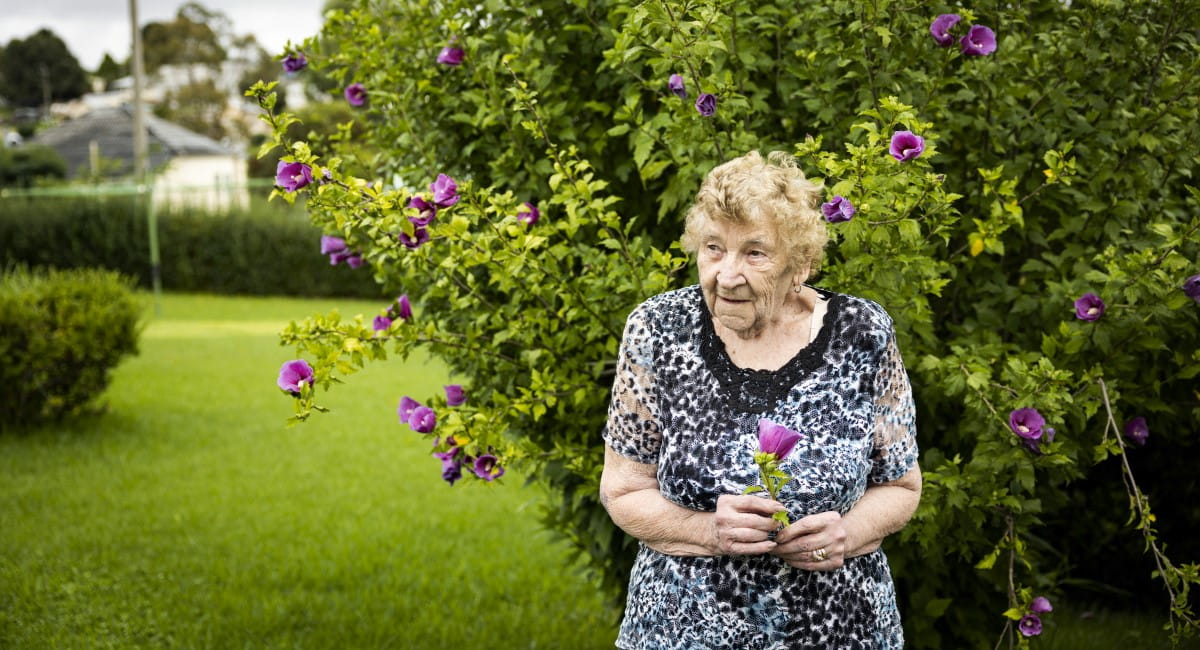“Osteoarthritis is the most common form of arthritis and can develop at any age, but tends to be more common in people aged over 40 years or those who have had joint injuries,” - Jonathan Smithers, CEO of Arthritis Australia, says.
Key points
- Arthritis is commonly mistaken as a normal part of ageing. However, lifestyle changes may play an important role in prevention.
- Early diagnosis can lessen the severity of symptoms, help you stay independent and keep you healthy.
- Your GP is an important resource: they can answer questions about your condition, talk you through options for treatment and help to create a Chronic Disease Management Plan (CDMP).
- Alec has been a customer with Australian Unity since 2015 and receives fortnightly in home nursing support , through his Department of Veterans Affairs (DVA) funding and continues to live independently in his own home, with support from his Australian Unity care team.
- If you’re looking for extra support to manage your arthritis at home, we have access to a large network of healthcare professionals who can provide services such as nursing, occupational therapy, physiotherapy and exercise physiology.
Arthritis is a collective term used to describe more than 100 different conditions. All affect joint health but may be caused by different things. Osteoarthritis is a degenerative disease, gout is caused by a build-up of minerals and rheumatoid arthritis is a type of ‘autoimmune arthritis’ where a person’s immune system attacks the joints.
Your likelihood of developing arthritis depends largely on the specific condition. Dr Michelle Funder, president of Osteopathy Australia, says, “some of these you cannot avoid as they are hereditary or idiopathic (which means we don’t know why they happen to certain people).” For older Australians in particular, previous injuries and lifestyle factors may be significant.
Aches or arthritis?
Dr Funder warns that untreated arthritis can cause more serious health issues including joint deformity and severe loss of function whereas some inflammatory conditions may impact other organs.
It’s important to understand arthritis symptoms for early diagnosis. Symptoms can vary and don’t always indicate arthritis, but the most common things to look out for are pain, stiffness or reduced mobility. “Joint pain could be from an injury or from using your joints and muscles in an unusual way (for example playing a new sport or lifting heavy boxes). Talk to your doctor if you have pain and stiffness that starts for no clear reason, lasts for more than a few days, or comes on with swelling, redness and warmth,” Jonathan says.
Varying causes and symptoms make it essential to seek a professional for diagnosis. “Medical and allied health professionals will be able to assess you and your joints. If arthritis is a possible diagnosis, they will order the correct tests, such as an X-ray or blood test, to confirm,” Dr Funder says.

New research
The good news is that experts from all around Australia are working on technologies that make life with arthritis better. Arthritis Australia’s Accessible Design Division aims to improve independence by making products and packaging easier for people with arthritis to use. “We have worked to improve and certify packaging that meets our consumers’ needs, including portion-control packaging from SPC and Kelloggs,” Jonathan says.
The Bionics Institute in Melbourne is developing a tiny implanted device that can control the inflammation response that affects rheumatoid arthritis. Researchers hope to take the device into clinical trials over the next few years.
Why it’s important to stay healthy
“It is never too late to make positive lifestyle changes to reduce your risk of arthritis, or to improve your symptoms if you are living with arthritis,” Jonathan says. Managing overall health, including maintaining a healthy weight and staying active is key, especially for minimising pain and flare-ups.
“Strengthening the muscles and tendons around the joints affected by arthritis is the best way to reduce pain and protect the joints. Some research suggests that gentle massage and stretching can help reduce pain,” Dr Funder adds.
Infections (rheumatoid arthritis), repetitive motions, stress and some foods (especially for gout) can make symptoms worse. Although it’s not conclusive, some research and anecdotal evidence suggest that flare-ups can come with the seasons. This could be due to cold weather or even changes in air pressure causing stiffness and soreness. Staying active, eating well and taking care of your health to prevent infection is essential.

Disclaimer: Information provided in this article is of a general nature. Australian Unity accepts no responsibility for the accuracy of any of the opinions, advice, representations or information contained in this publication. Readers should rely on their own advice and enquiries in making decisions affecting their own health, wellbeing or interest.


